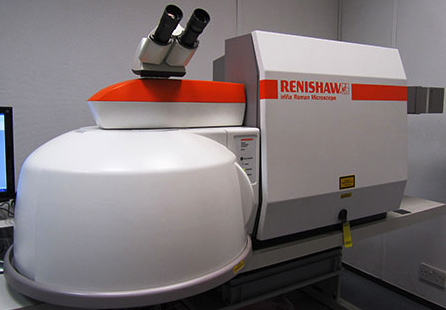Members Login

Channels
Special Offers & Promotions
Renishaw Reports on the Use of Raman Spectroscopy at CNRS Orl
Renishaw, a world leader in metrology and spectroscopy technologies, reports on the use of Raman spectroscopy in the CEMHTI laboratory of CNRS, Orléans, France.
 Materials are studied under extreme conditions such as at elevated temperatures and irradiated with particle beams.
Materials are studied under extreme conditions such as at elevated temperatures and irradiated with particle beams.
Dr Patrick Simon works with materials under extreme conditions of high temperature and irradiation. His lab, known as Conditions Extrêmes et Matériaux: Haute Température et Irradiation (CEMHTI), is located at the National Centre for Scientific Research (CNRS) in Orléans, around 110 km southwest of Paris. His team, and more generally the CEMHTI laboratory, uses spectroscopic methods to study materials submitted to extreme conditions, such as high temperatures (more than 2000°C) and irradiation with particle beams (usually He2+ ions or α particles). They perform studies of these materials either after their exposure to these hostile conditions, or during them; for example, in-situ measurements in a furnace or inside a particle beam accelerator.
Their pioneering work involves the investigation of a varied range of materials: from glasses and ceramics (for high temperature applications) to materials for nuclear applications or those submitted to irradiation, especially uranium compounds; also silicon carbide and nuclear graphites. They also study monocrystalline or thin films systems, carbonaceous materials and earth sciences materials. An important part of the group activity is in method development. This includes in-situ measurements, high spectral stability spectroscopy and Raman image data processing.
Dr Simon's group has access to several types of Raman spectrometer but it is the Renishaw inVia confocal Raman microscope that they use as their reference instrument, using it to test all new materials. It is used also for temperature studies below 1200 °C and for practically all measurements which are not in situ under irradiation. Although Dr Simon studies materials submitted to extreme conditions, the inVia's stability ensures reliable results are obtained. The group also uses a portable Renishaw RA100 Raman Analyser with optical fibre connections when remote measurements are needed.
Dr Simon believes that there are multiple benefits of using the inVia system. He explains: "We like the ergonomic design and the ease of operation; inVia's high efficiency; the ability and speed to change a laser line without moving the sample under study. We like the internal calibration of frequency, the possibility of automatic adjustments, the different imaging modes - from the traditional point-to-point to the rapid StreamLine mode. I have also to stress the high efficiency of the Renishaw team, to solve any problem or question we have on the machine."
Media Partners


